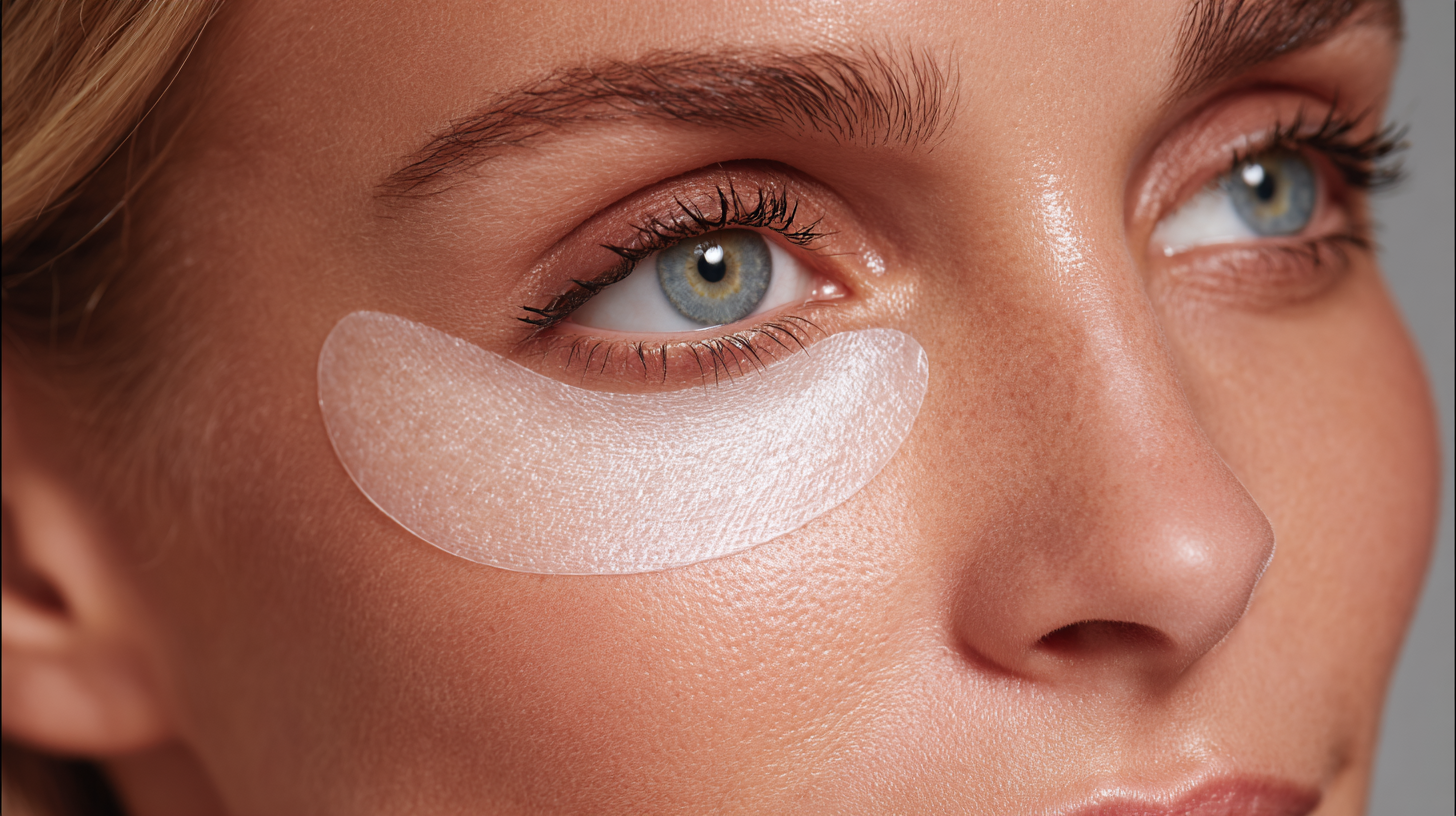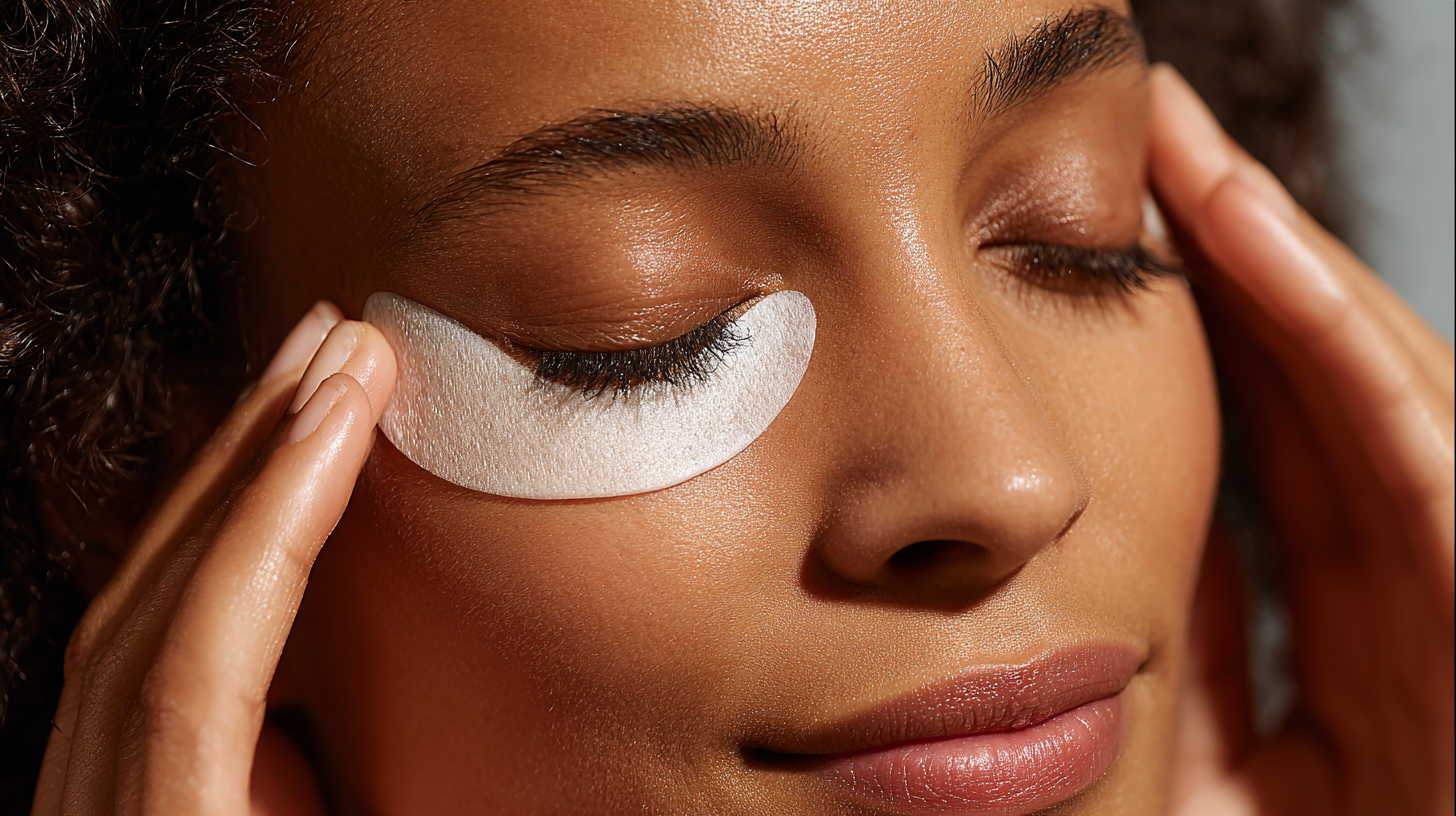In today's global beauty market, the demand for Under Eye Patches continues to soar, with a projected market growth rate of 9.0% annually through 2025, according to a recent report by Grand View Research. As consumers increasingly seek high-quality skincare solutions, selecting the right manufacturer is paramount for ensuring product efficacy and safety. Compliance with international trade regulations is not only essential for maintaining product standards but also for fostering consumer trust. This blog will delve into crucial guidelines for selecting top-notch manufacturers specializing in Under Eye Patches, focusing on compliance aspects that are critical for global trade success. By adhering to these guidelines, businesses can navigate the complexities of international regulations while catering to the growing demand for innovative eye care solutions.

In the competitive landscape of global trade, ensuring compliance is vital for manufacturers of under eye patches. Compliance not only relates to meeting international standards but also encompasses regulations that vary by region, which can impact product safety and efficacy. Understanding these requirements is essential to maintain market access and build consumer trust.
Tip: Familiarize yourself with the regulatory bodies in your target markets, such as the FDA in the United States or the European Medicines Agency in Europe. Each entity has specific guidelines regarding cosmetic products, including under eye patches, which must be adhered to for successful distribution.
Additionally, establishing a robust quality control system is crucial. It ensures that every batch of under eye patches is tested for safety and consistency, adhering to local and international regulations. This system should include proper documentation and traceability of ingredients used in production.
Tip: Implement regular training for your team on compliance practices and the latest industry standards. This not only helps in maintaining compliance but also encourages a culture of quality and safety throughout the manufacturing process.
The global cosmetics market is undergoing significant transformations, particularly in the regulatory landscape that governs product safety and compliance. According to a market analysis by Custom Market Insights, the natural cosmetics market is projected to reach USD 76.5 billion by 2033, growing at a compound annual growth rate (CAGR) of 5.4%. This surge emphasizes the increasing consumer demand for safe and compliant beauty products internationally. As regulations evolve across key regions such as the U.S., EU, UK, and China, companies must navigate a maze of compliance obligations to ensure their under-eye patches and other cosmetic products meet stringent safety standards.
Furthermore, the tightening of cosmetic regulations in markets like Canada, effective March 2025, highlights the importance of thorough product notifications for new imports. Such shifts underscore the necessity for brands to stay informed about key regulations affecting their market access. These regulatory changes not only challenge manufacturers to enhance their quality assurance practices but also shape consumer trust in brand integrity. With the global skincare market expected to grow from $115.65 billion in 2024 to a projected $194.05 billion by 2032, the importance of compliance will continue to be a crucial factor in capturing market share and fostering brand loyalty.

In the global marketplace, under eye patches have become increasingly popular, yet navigating tariffs and trade agreements significantly impacts production costs. According to a report from Grand View Research, the global eye care market, which includes under eye patches, is estimated to reach USD 21.4 billion by 2027, growing at a compound annual growth rate (CAGR) of 5.9%. This growth emphasizes the need for manufacturers to strategically manage costs, especially when tariffs vary widely across different regions. For instance, the U.S. imposed tariffs on certain cosmetic goods that could affect the pricing structure of under eye patches imported from countries like China.
Moreover, trade agreements play a crucial role in determining the feasibility of production strategies. The Regional Comprehensive Economic Partnership (RCEP), which includes several Asia-Pacific nations, aims to reduce tariffs significantly among member countries. A study by the Peterson Institute for International Economics found that eliminating tariffs within such agreements could lower production costs by up to 7% in the beauty sector. Consequently, firms must remain vigilant and adaptive to changing regulations and leverage trade agreements to optimize their supply chains and ensure compliance while managing costs effectively in a competitive market.
| Country | Tariff Rate (%) | Average Production Cost (USD) | Trade Agreement Status | Impact on Cost (USD) |
|---|---|---|---|---|
| USA | 5.0% | 2.50 | NAFTA | 0.13 |
| Germany | 10.0% | 2.80 | EU Free Trade Agreement | 0.28 |
| China | 10.0% | 1.80 | Belt and Road Initiative | 0.18 |
| Japan | 1.5% | 2.00 | CPTPP | 0.03 |
| South Korea | 6.0% | 2.40 | KORUS | 0.14 |
In the realm of global trade, ensuring quality assurance practices is crucial, particularly for products such as under-eye patches that are widely used for cosmetic and therapeutic purposes. According to a report by Grand View Research, the global market for eye care products is expected to reach USD 12.5 billion by 2025, emphasizing the need for stringent quality control measures to ensure both product safety and efficacy. With the increasing consumer demand for functional and effective beauty products, manufacturers must adopt comprehensive testing protocols that meet international standards, such as ISO 9001 and ISO 22716, to enhance consumer trust and brand reputation.
Furthermore, compliance with safety regulations set forth by authorities like the FDA and EU Cosmetic Regulation is non-negotiable. A study from the Personal Care Products Council indicates that 75% of consumers are more likely to choose brands that demonstrate rigorous safety testing and transparency in their sourcing and manufacturing processes. This not only protects consumers from potential harmful ingredients but also reinforces the brand’s commitment to quality. With consumers becoming increasingly aware of product formulations and origins, businesses must prioritize adherence to safety and efficacy guidelines, underlining the significance of robust quality assurance practices in maintaining competitiveness in the global market.
This chart illustrates the compliance rates in key quality assurance practices for under eye patches in global trade, showcasing the importance of product safety and efficacy across various regions.
 In the beauty industry, ensuring compliance in global trade is crucial, especially for products like under eye patches that cater to a diverse market. Leveraging data analytics can significantly enhance compliance monitoring, enabling companies to navigate complex regulations more effectively. By utilizing advanced analytics tools, businesses can track ingredient sourcing, manufacturing practices, and labeling requirements in real-time, reducing the risk of non-compliance and potential penalties.
In the beauty industry, ensuring compliance in global trade is crucial, especially for products like under eye patches that cater to a diverse market. Leveraging data analytics can significantly enhance compliance monitoring, enabling companies to navigate complex regulations more effectively. By utilizing advanced analytics tools, businesses can track ingredient sourcing, manufacturing practices, and labeling requirements in real-time, reducing the risk of non-compliance and potential penalties.
Data analytics also allow companies to better understand market trends and consumer preferences, providing insights that inform compliance strategies. By analyzing sales data and customer feedback, brands can adjust their formulations and marketing approaches to meet varying global standards. Furthermore, predictive analytics can anticipate changes in regulations, empowering companies to stay ahead of compliance challenges and maintain their competitive edge in the beauty market. With a proactive approach to data-driven compliance, businesses can ensure their under eye patches not only meet legal standards but also resonate with consumers across the globe.
